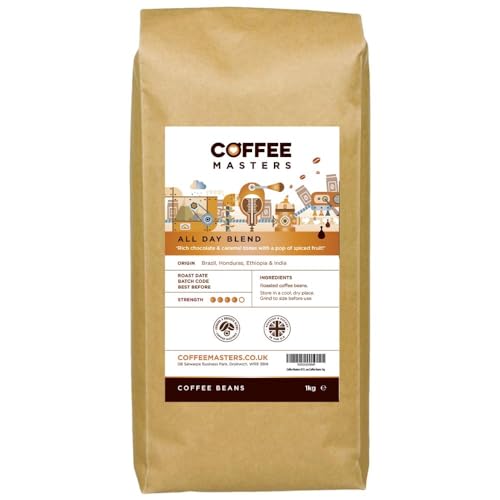The 10 Most Worst Coffee Beans Types Fails Of All Time Could've Been Prevented

Coffee Bean Types: Arabica, Robusta, Liberica, and Excelsa
If you're a fan of coffee, you likely already know that different kinds of beans produce varying flavor profiles. Find out about four of the most popular varieties: Arabica. Robusta. Liberica. and Excelsa.
Excelsa beans are a type of Liberica that is cultivated exclusively in Southeast Asia. They have a fruitier and tarter flavor profile, and are often added to blends of coffee to enhance the flavor.
Arabica
Arabica is the most sought-after coffee in the world and accounts for 75% of global coffee beans produced. Arabica beans are sweeter and milder in flavor than Robusta and are available in a variety of flavour profiles. The taste and aroma components of a cup of coffee can differ significantly based on the growing conditions and processing methods used to make it.
The word "coffee" originates from the Arabic word for berry, and coffee beans are actually fruit seeds that grow inside bright red berries. It is believed that ancient Ethiopian shepherds noticed that their goats were stimulated by eating berries. The cultivation of coffee grew quickly all over the world.
Coffee beans can grow at high altitudes and flourish in cool temperatures and lots of rain. This is one of the main reasons for why Arabica is considered to be the best-tasting type of coffee.
Many specialty coffee shops and roasters focus on finding their arabica beans in a sustainable manner, by emphasizing fair wages for farmers and sustainable cultivation practices. These companies typically blend arabica beans to make distinctive coffees that are suitable for various brewing methods. Blending allows for control over the aroma, flavor, body, and acidity of the coffee. It is often preferred in order to achieve an even and consistent flavor that appeals to a larger market.
Robusta
Robusta beans are the second most sought-after kind of coffee bean around the world. organic coffee beans have more caffeine per bean and are more resistant against pests and diseases. They also contain more chlorogenic acids, which are naturally-occurring antioxidants. These acids can cause oxidation during the coffee brewing and produce undesirable flavors.

The plant is more durable than the arabica and can grow in less favorable environments. It can withstand warmer temperatures and does well in direct sunlight. It grows faster and produces more coffee per plant than arabica, making it a more cost-effective plant to grow.
While it may sound counterintuitive however, arabica and robusta beans are often blended together to create coffee blends. If you see names like Uganda or Kenya on the bag of coffee it's possible that there's also some robusta.
While some roasters exclusively use arabica beans, the majority of roasters use a mix of the two varieties to cut costs and ensure quality. To preserve the flavor integrity you must select a high quality bean from a trusted source. The best method to achieve this is to purchase your beans directly from the farmer.
Liberica
Liberica beans have a shape that is like a football, which is what makes them distinct from other types of coffee beans. They have a distinct aroma that is floral and fruity with smokey undertones. They are often added to other types of coffee beans to give them a more rounded and more robust flavor.
Liberica coffee beans are available in West Africa, Malaysia (Borneo), and Southeast Asia. They are tolerant of hot, humid climates and can grow at low altitudes. They are also more resistant to disease than Arabica or Robusta.
These characteristics make them ideal for home-growing. On the internet, you can purchase seeds from a variety of sources. However, it is recommended to purchase the beans from local producers in order to ensure high-quality. The best conditions for growing Liberica coffee plants include fertile deep volcanic soils, with moderately acidic pH, and adequate annual rainfall.
Excelsa is a different variety of coffee bean. It was initially classified as a separate species, but it has since been reclassified as a Liberica variant. These coffee beans are oval-shaped and are grown on large coffee plants that range from 20-30 feet in height at moderate altitudes. They have a distinctive taste that is both fruity and tart that has made them a popular choice for blends in house. They are also less pronounced in flavor and caffeine than Arabica and Robusta, but still have a distinctive taste.
Excelsa
Excelsa coffee beans aren't as widely used as Arabica and Robusta even though they are the fourth most popular. In fact, they were considered distinct species of coffee until 2006 when they were classified as a synonym for Coffea liberica var. dewevrei. They are produced in Southeast Asia today and account for 7% of the world's production of coffee. The coffee beans have the shape of a teardrop and possess a dark, eerie taste. They are frequently used to give blends more body and a sweet tart flavor of ripe fruit.
Arabica beans are the most well-known, and are renowned for having a a sweeter taste. They thrive in warm, tropical climates and high altitudes. They also have a touch of acidity. If properly brewed and roasted they may have notes like chocolate, nuts or even fruit.
Robusta is the second most adored coffee around the world. It makes up around 40% of all coffee consumed in the world. Robusta is rounder and smaller, yet contain more caffeine than Arabica. They also have more bitterness than the other two varieties, and tend to have woody and earthy undertones.
Now that you've learned the four most widely used varieties of coffee beans, it's time to choose your perfect brew. If you prefer smooth and delicate flavors go for an arabica bean or a blend made up of robusta beans and arabica beans.
